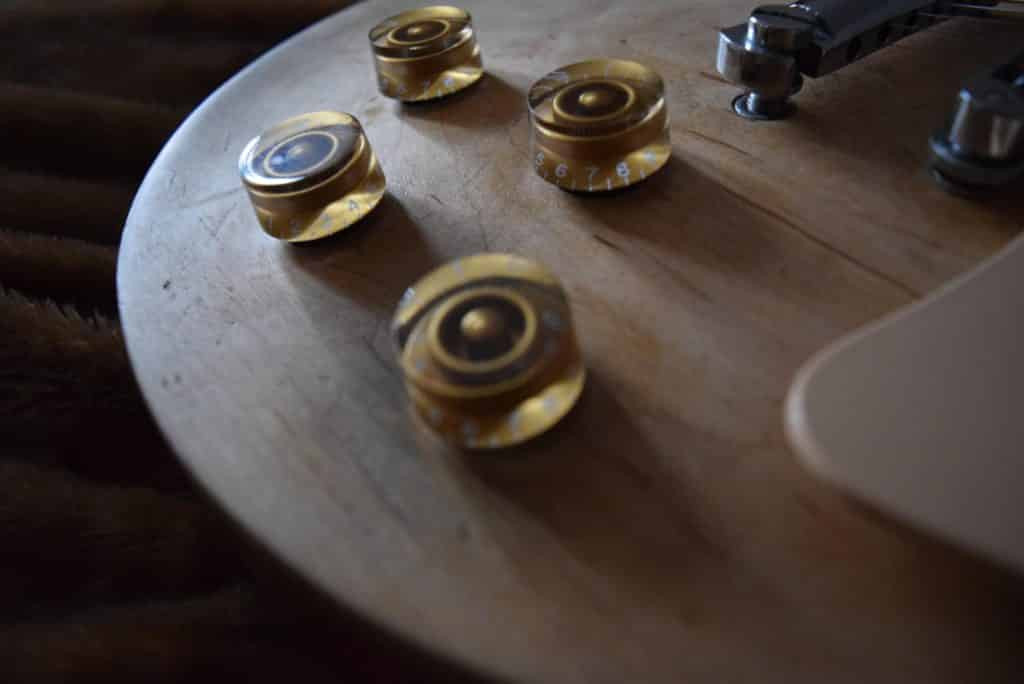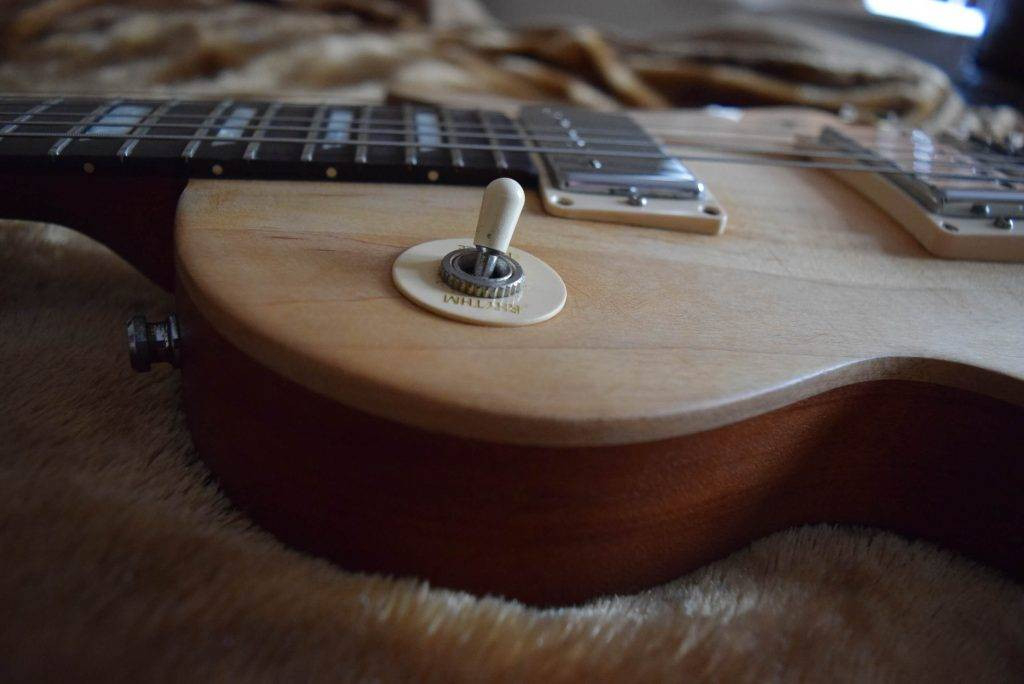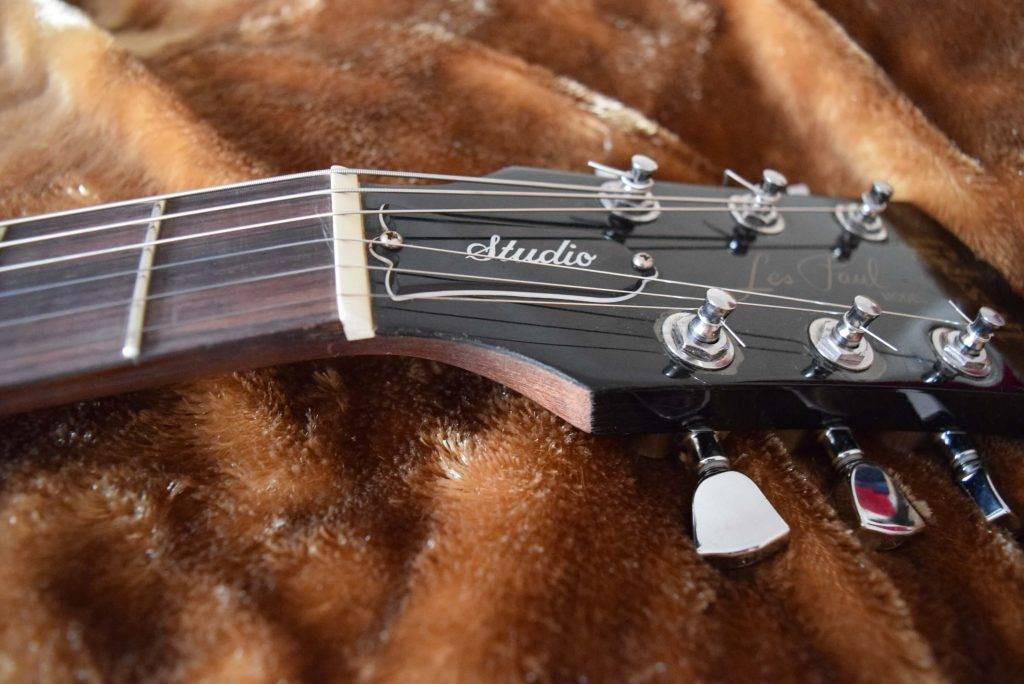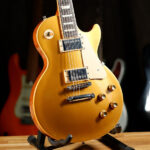Beyond the Gloss: A Decade with the Gibson Les Paul Studio
The Gibson Les Paul Studio. It’s a name that resonates with countless guitarists, often whispered as the gateway to genuine Les Paul tone without the premium price tag. Much has been discussed and debated about this iconic guitar, from detailed specifications to passionate comparisons with its more ornamented siblings, like the Les Paul Standard. You can delve into those technical details and comparisons in articles such as Why the Gibson Les Paul Is Better Than the Fender Stratocaster and Why the Fender Stratocaster is better than the Gibson Les Paul. However, this isn’t just another spec sheet rundown. This is a personal, unfiltered account of living with a 2003 Gibson Les Paul Studio for ten solid years – from the initial thrill of online purchase (£799 from Merchant City Music in Glasgow) to the bittersweet moment of selling it a decade later for £600. Consider this a real-world user review, the good, the bad, and everything in between, from a player’s perspective.
Out-of-the-Box Experience: Gig-Ready or Needs Tweaks?
The allure of a brand-new Gibson Les Paul is undeniable. But is the Studio model ready to rock straight out of the case? In my experience, not entirely. My 2003 Studio arrived with bridge saddles that were surprisingly sharp, almost like knife edges. This resulted in frustratingly frequent string breakages, particularly with wound strings, right from the start. Instead of immediately making adjustments myself, I opted to let the strings naturally wear down the saddles, a process that took about four weeks of regular gigging. Interestingly, my backup guitar at the time, a 2004 Epiphone Les Paul Standard (a frequent point of comparison throughout this review), didn’t exhibit this issue despite costing significantly less.
Another aspect to be aware of is the neck profile. My Studio featured a substantial ’50s style neck with a nitrocellulose finish that felt somewhat sticky. Players accustomed to slimmer, faster necks might find this a point of initial adjustment. It’s a matter of personal preference, but something to consider.
Gibson Les Paul Studio
Les Paul Studio vs. Standard: More Than Just ‘Light’?
A common question is whether the Gibson Les Paul Studio is simply a stripped-down Les Paul Standard. The answer is a resounding no. While it’s true that the Studio’s body is approximately a quarter of an inch thinner than a Standard, this is arguably the only change that could subtly influence the guitar’s inherent sound. Crucially, the Les Paul Studio retains the core sonic DNA of a Les Paul. It boasts the same essential electronics, including the powerful Gibson 490R and 498T pickups, a nitrocellulose finish, and a rounded ’50s mahogany neck profile with a rosewood fingerboard. While the Les Paul Standard offers the option of a slimmer ’60s neck profile, the fundamental construction and components are remarkably similar.
Cosmetically, the differences are more apparent. Studio models typically feature less figured maple tops compared to the often visually stunning finishes of Standards, and you won’t find the elegant pearloid Gibson headstock logo on a Studio. Perhaps the most significant visual and functional difference is the absence of neck binding on the Studio. However, at the time my Studio was made, this lack of binding was arguably an advantage. Gibson was still binding over fret ends, which could sometimes lead to strings catching during bends on bound necks.
My 2003 Gibson Les Paul Studio had an ebony finish with silver hardware, giving it a striking, modern aesthetic. I personally didn’t miss the traditional sunburst finishes often associated with Les Pauls. Furthermore, the Studio came equipped with speed knobs, a feature I actually preferred over the traditional top hat knobs on my Epiphone Les Paul Standard.
 Gibson Les Paul Studio
Gibson Les Paul Studio
A close-up showcasing the minimalist aesthetic of the Gibson Les Paul Studio, highlighting its ebony finish and silver hardware, a departure from the more ornate Les Paul Standard.
Playability and Feel: Living Up to the Legend?
Les Paul guitars are often lauded for their playability, a sentiment famously echoed by Les Paul himself. While I appreciate the Les Paul’s feel, I personally find the longer scale length of a Fender Stratocaster more accommodating for my larger hands, offering more space for intricate fretwork. Additionally, the Stratocaster’s body contours make it arguably more comfortable to hold for extended periods.
However, the Gibson Les Paul Studio excels in areas of action and string tension. My Studio achieved an exceptionally low, buzz-free action, lower than any other guitar I’ve owned. Combined with the shorter scale length, which results in slightly less string tension, and a set of light gauge .009 strings, playing the Studio was almost effortless. In fact, it could feel too easy at times, prompting a desire to move to heavier gauge strings to unlock the fuller tonal potential and improved tuning stability that heavier strings often provide.
Interestingly, the slightly thinner body of the Les Paul Studio brings its weight closer to that of a Stratocaster, addressing one common critique of Les Pauls being overly heavy.
Returning to the comparison with my Epiphone Les Paul Standard, while the Epiphone came surprisingly close in terms of overall playability, the fretwork and general fretboard finishing on the Gibson were noticeably superior. The Gibson offered a smoother, more refined playing experience that I consistently appreciated.
Gibson Les Paul Studio
The Sonic Palette: Exploring the Tones of the Les Paul Studio
If you’re aiming for the iconic neck pickup tones of Mark Knopfler in “Brothers in Arms” or Slash’s soaring leads in “Sweet Child O’ Mine,” a Gibson Les Paul, particularly on the neck pickup, is essential. Nothing quite captures that wide, flute-like, richly saturated, and warmly overdriven sound.
However, in my personal playing experience, roughly 95% of my time with the Les Paul Studio was spent utilizing the bridge Gibson 498T pickup. While the neck pickup delivers that classic “woman tone,” I found it somewhat muddy for overdriven rhythm playing. Conversely, the bridge pickup possesses a powerful, assertive character that cuts through a mix effortlessly. As I’ve discussed in other articles like Why the Fender Stratocaster is better than the Gibson Les Paul, Stratocasters often slice through with a precisely EQ’d clarity, while Les Pauls tend to rely more on sheer power.
I lean towards the Les Paul approach of cutting through with output, as I prefer a sustaining, almost feedback-laden, singing guitar tone rather than a sterile, clean signal. I want notes to linger and evolve, not abruptly decay. The 498T bridge pickup strikes an excellent balance, offering crisp, articulate highs, punchy, woody mids, and a controlled yet substantial bass response. It’s an instantly recognizable and deeply satisfying tone that is easily manipulated with minimal effort.
Notably, the Gibson 490R and 498T pickups were standard across much of the Gibson range at the time, even gracing high-end Custom and Supreme models. While many modern Les Pauls now feature lower output Burstbucker pickups, I never personally considered Burstbuckers an inherent upgrade. The 490R and 498T are undeniably two of the most recorded pickups in history and remain highly sought after in many vintage and used Gibson Les Pauls today.
The subtle nuances of the Gibson Les Paul Studio’s tone became even more apparent in its early years, especially when directly comparing it to my upgraded Epiphone Les Paul Standard. While I had invested in improving the Epiphone with a new switch and Seymour Duncan ’59 (neck) and JB (bridge) pickups, the Gibson Les Paul Studio consistently sounded broader, more refined, clearer, cleaner, and more naturally resonant. The Epiphone, in comparison, often sounded slightly muddier and less articulate.
 Gibson Les Paul Studio
Gibson Les Paul Studio
A detailed shot of the Gibson Les Paul Studio’s body, emphasizing the classic Les Paul shape and the positioning of the pickups, illustrating the source of its iconic tones.
Versatility Unveiled: Beyond the Rock Riffs
The Gibson Les Paul Studio reveals its versatility when you start exploring the guitar’s volume and tone controls, or adjusting your amplifier settings. Compared to the Les Paul Standard of that era, which could sometimes feel somewhat monolithic and less dynamically responsive, the Studio seemed leaner and more adept at transitioning into cleaner sonic territories. While it will never rival Fender guitars (Fender 0113000700 American Standard Stratocaster) in outright clean tone articulation, for live performance situations, the Studio is remarkably versatile and could easily be your sole guitar for a gig. The taper on the volume and tone potentiometers was consistently smooth and intuitive, without any abrupt volume jumps, gain drops, or crackling static. At full volume and tone settings, the Studio is slightly less full-bodied than a Les Paul Standard, but this characteristic becomes advantageous when rolling back the controls, creating a more usable, lower-powered rhythm tone that retains crucial high frequencies and clarity.
Long-Term Reliability: Is the Studio Built to Last?
The Gibson Les Paul Studio, with its one-piece angled mahogany neck, projects an image of robust durability, suggesting it should withstand the rigors of time with proper care. In theory, it should be a guitar for life.
However, my experience revealed the limitations of the nitrocellulose finish over the long haul. After approximately four to five years of regular use, the finish began to deteriorate. While I’ve witnessed vintage instruments from the 1960s and 70s age gracefully, developing the coveted “patina,” my Studio’s nitro finish succumbed to moisture intrusion. This resulted in unsightly blistering and a missing patch of finish, exposing the bare wood underneath.
The stark reality is that nitrocellulose, while historically significant and tonally resonant to some, is not inherently a durable finish. Modern guitar finishes often offer significantly greater protection against wear and environmental factors.
From Ebony to Natural: A DIY Customization Journey
The finish damage marked a turning point. Partly out of necessity and partly driven by a desire to personalize the guitar, I decided to strip the remaining nitrocellulose finish. With limited time and no backup guitar readily available due to a busy gigging schedule, I undertook a somewhat rushed refinishing process. Along the way, I inadvertently damaged the bridge tone potentiometer, likely due to sawdust contamination, leading to its disconnection. Interestingly, this accidental modification resulted in a slightly brighter and hotter bridge pickup tone, which I actually preferred.
Following the sanding, I sealed the exposed wood with two coats of Danish oil (ideally, a third coat would have been applied if time permitted). I also replaced the original black switch tip and pickup rings with cream-colored counterparts, and swapped the black speed knobs for amber versions, further enhancing the natural wood aesthetic.
The transformation was remarkable. The result was a beautiful, natural wood Gibson Les Paul Studio with customized electronics and the added benefit of a satin finish on the back of the neck, which significantly improved playability compared to the original sticky nitro finish.
Gibson Les Paul Studio
Tuning Stability: Addressing a Common Les Paul Concern
Regrettably, after removing the nitro finish, tuning stability became an ongoing issue with my Les Paul Studio. Perhaps an additional coat of Danish oil would have mitigated this, but without the protective nitro seal, the guitar seemed more vulnerable to environmental changes. The wood appeared to become slightly softer, possibly due to moisture absorption, and the guitar became more prone to drifting out of tune. Furthermore, the nitro finish, for better or worse, seemed to impart a certain cohesive quality to the sound, a “sheen” that was now absent.
The nut also seemed to require more frequent attention. Whether it was sawdust or other debris lodged in the nut slots, or simply the need for replacement, big string bends began to cause tuning problems, despite my best efforts to clean and lubricate the nut.
 Gibson Les Paul Studio
Gibson Les Paul Studio
A close-up of the Gibson Les Paul Studio headstock, highlighting the tuning pegs and nut, components crucial to tuning stability, a factor that became a concern later in the guitar’s life.
Farewell, But Not Forgotten: Reflecting on 10 Years
I persevered with my customized Les Paul Studio, largely because I still loved its unique look, its inherent playability, and the personalized character the modifications had imbued. However, as it approached its tenth year, signs of age and wear became increasingly apparent. The jack socket began to rust, one of the endpin holes required constant filling with matchsticks to maintain strap button security (a common old-school fix), and the control knobs were nearing disintegration. In essence, the entire guitar was showing its age.
More concerning was a growing sense that the wood itself was becoming damp, contributing to a perceived muddiness in the tone. Whether this was a genuine effect of moisture, the natural aging of the Gibson 490R and 498T pickup magnets over a decade, or simply my subjective perception, is debatable.
In a live performance context, minimizing distractions is paramount. Unfortunately, my Gibson Les Paul Studio had, regrettably, become a source of increasing distractions.
Considering a New Gibson Les Paul Studio?
Despite the issues that surfaced over a decade of ownership, the Gibson Les Paul Studio remains a compelling option for guitarists seeking genuine Les Paul tone and feel at a more accessible price point. While it may require some initial setup tweaks and the nitro finish has long-term durability considerations, the Studio delivers the core Les Paul experience in a no-frills package. If you’re intrigued and considering purchasing a new Gibson Les Paul Studio, you can support this blog by using my Guitar Center affiliate link here or by clicking the image below.

